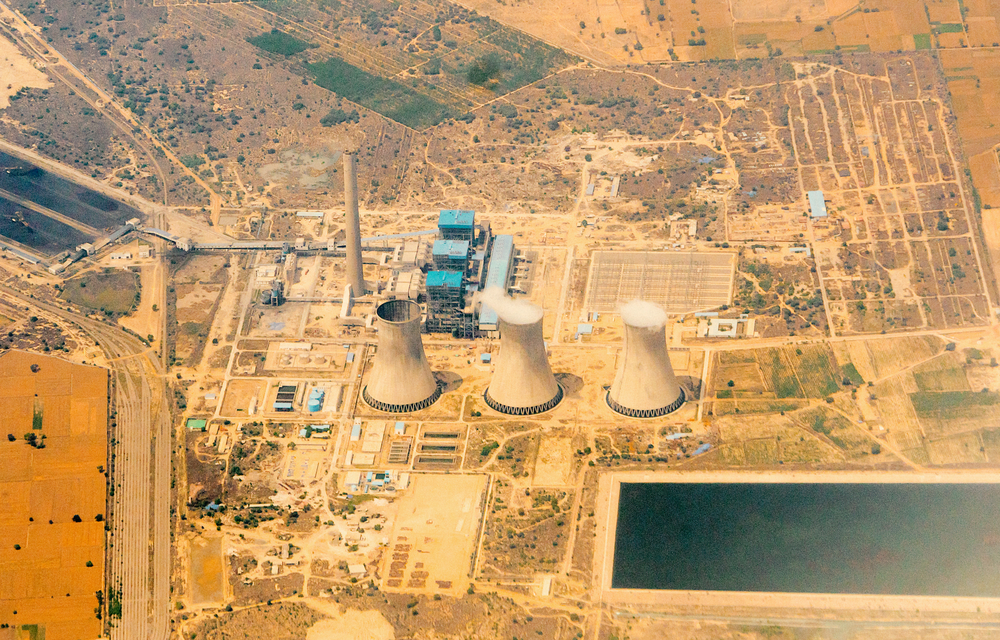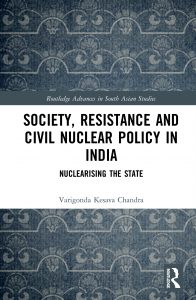Social opposition to nuclear power plants in India: Assessing their impact on state policy

Nuclear energy is controversial in India. Over the past two decades, anti-nuclear protest has erupted in different parts of the country, with varying levels of success. How do these ‘anti-nuclear’ social movements impede the inception of a nuclear power plant project, and thereby adversely impact the Indian state’s civil nuclear policy? And why have some of these movements evolved into strong political forces, while others have been weak or ineffectual? These are the questions posed in my recently published book, Society, Resistance and Civil Nuclear Policy in India: Nuclearising the State.
The Indian state’s civil nuclear energy policy aims to incorporate nuclear energy as a key supply source of India’s electricity power generation industry. At present, nuclear power forms around 2 percent of the country’s power generation supply. The construction and commissioning of nuclear power plants, in various parts of the country, therefore forms a key facet of India’s civil nuclear policy.
Within the Indian state, this responsibility for the inception of nuclear power plants is hierarchical: the central government is primarily in charge, whereas the respective state governments are charged with aiding the central government in logistical aspects, including land acquisition for the plant. In addition, a state-affiliated technocratic wing, constituting the Atomic Energy Commission (AEC), which comprises of the Department of Atomic Energy (DAE) and the Nuclear Power Corporation of India Limited (NPCIL), advices and works with the central government in formulating and implementing its civil nuclear policy. The Indian state often pursues collaboration with multinational firms to help construct its nuclear power projects. This top-down, state-led enterprise has, however, considerable societal opposition.
Social opposition to nuclear power plants in India has primarily emerged from the populace that resides in and around the vicinity of a proposed nuclear project. Such communities are often economically marginalised; are dependent upon traditional modes of livelihood such as fishing and small-scale agriculture; and often reside in rural regions. They may, in addition, face a threat of displacement due to possible land acquisitions for the project. Finally, they also perceive potential threats to health and safety, particularly from the possibility of catastrophic accidents within the nuclear plant.
Their opposition to a specific nuclear power plant is often supported by, or complemented by, social organisations and activists, who are often urban-based, and whose opposition to the nuclear project is predicated largely on ideological grounds. As a result, opposition to a nuclear project often coalesces into a protracted social movement. Such movements have emerged in different parts of the country, with highly varied impacts on the Indian state’s civil nuclear policy. What explains this variation?
Using a comparative case study model, I answer the question through a combination of theorisation and ethnography. Through an extensive theorisation of social movements, particularly those that oppose nuclear power plants or other state-led and affiliated developmental works, I propose the following framework: The impact of an anti-nuclear social movement, particularly within the Indian context, is determined by its collective action repertoires, the politicisation of nuclear power and of the state’s developmental paradigm, and openness of the state’s input structures.
Collective action repertoires refer to linkages among social actors that comprise a movement, as well as the strategies they employ in engaging with the state. Politicisation determines to the extent to which the larger society can be polarised against nuclear power, or against the state’s role in economic development. Finally, open input structures are discerned by linkages between influential political elites and the social movement, as well as fractures among political elites.
I study three cases of anti-nuclear movements in diverse locations in India: Kudankulam in Tamil Nadu, Kovvada in Andhra Pradesh and Haripur in West Bengal. The timeline is roughly mid-2000s to mid-2010s. Where the anti-nuclear movement in Haripur succeeded in affecting a suspension of a potential nuclear project, the movement in Kudankulam failed to prevent the project’s inception. The movement in Kovvada also died down. The project, however, remains in abeyance, owing to the partner multinational firms pulling out.
Through an in-depth empirical study of each case, I demonstrate how the anti-nuclear movement in Haripur benefitted from stronger action repertoires, bolstered by long-standing linkages between a powerful fisheries union and the local populace. On the contrary, both the Kovvada and Kudankulam-based anti-nuclear movements suffered from factions and cleavages among its various social actors.
The Haripur anti-nuclear movement also benefited from greater politicisation of the state’s developmental paradigm: West Bengal in the mid-2000s was rocked by a series of simultaneous protests against state-led developmental projects, of which Haripur was one. This contrasted with the situation in Andhra Pradesh and Tamil Nadu, where politicisation of the nuclear plant remained restricted to some fishing communities along the coastline. Finally, the Haripur anti-nuclear movement benefited from open state input structures.
A major opposition party in West Bengal, the Trinamool Congress, was engaged in a symbiotic relationship with the various protest movements against developmental projects in the state. In the 2011 state elections, the Trinamool Congress defeated the incumbent to take over the West Bengal state government. The party’s continued support for the protest movements ensured that the nuclear project remained suspended.
Civil nuclear development in India is part of the Indian state’s larger economic developmental paradigm. This paradigm is state-led and market-affiliated. It prioritises industrialisation and urbanisation, even as it marginalises the vast majority of the rural populace, who rely on traditional modes of livelihood. Social opposition to nuclear power plants can be viewed within the ambit of societal opposition to a discriminatory developmental paradigm.
The framework I propose in this book can potentially be tested, with some modification, on social movements that emerge against other forms of state-led and affiliated development, or other state policies. Studying the impact of social movements allows for a greater understanding of state-society relations and the role of society in policy formulation.
Varigonda Kesava Chandra is a Postdoctoral Research Fellow at ARI, affiliated with the Asian Peace Programme (APP). This contribution stems from his doctoral thesis and publication: Society, Resistance and Civil Nuclear Policy in India: Nuclearising the State (London: Routledge, 2020).
The views expressed in this forum are those of the individual authors and do not represent the views of the Asia Research Institute, National University of Singapore, or the institutions to which the authors are attached.










